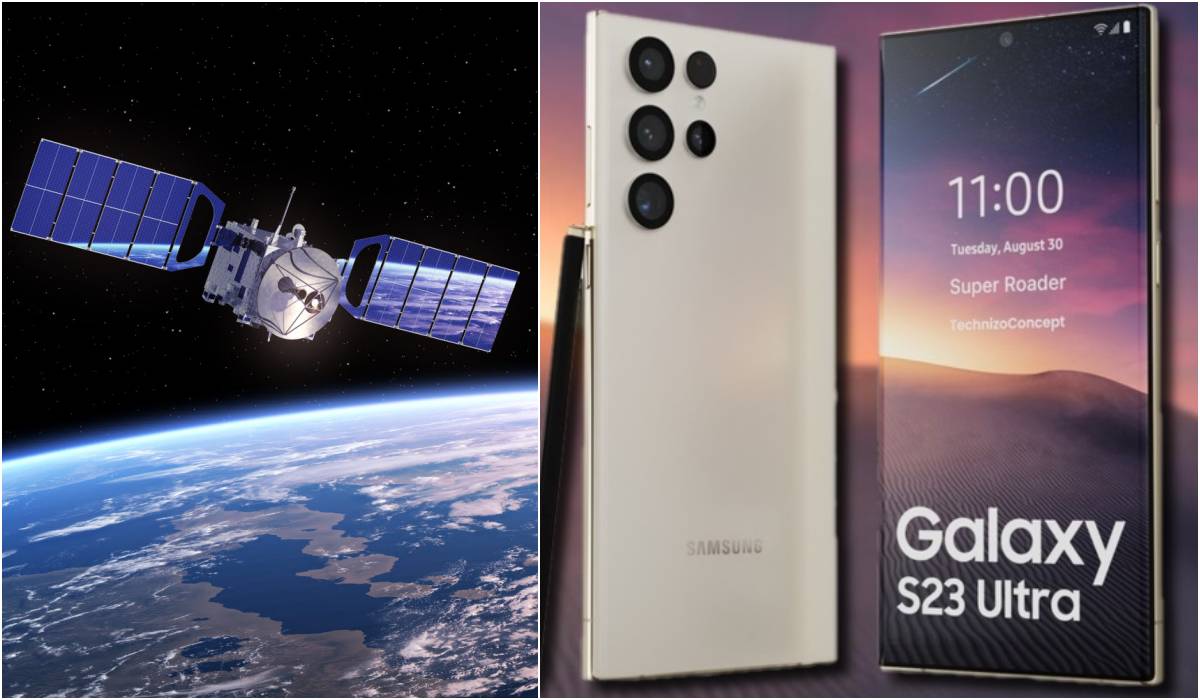Samsung Galaxy S23’s launch is now not so far, and new details that surfaced online make it more exciting such as a piece of new information suggesting satellite communications support.
It seems sufficient as their biggest competitor Apple has already started rolling out this feature for the iPhone 14 user in some limited areas, and now, Samsung is also ready to join this evolution.
Samsung’s Satellite Communication Feature Is Rumored To Be More Advanced
According to a report from ETNews, the Samsung Galaxy S23 series will get a Satellite Connectivity system as Apple launched for iPhone 14, but Samsung’s feature is rumored to be more advanced than Apple’s current feature.
It seems fair that Samsung would provide some more enhancement than Apple in this feature as they are going to introduce it next year, so they got time to compel it in more refinement.
Instead of launching its own satellite, Samsung has partnered with Iridium Communications to handle all the processes regarding satellite connectivity, as Apple has partnered with GlobalStar to make the satellite system possible.
The US-based Iridium Communications operates around 66 active satellites, which makes it more favored in the industry.
If Samsung introduces voice-based communication through the satellite so it will clearly stand out.
Currently, it is unclarified what different options it will have, but I’m sure that it will have the same as iPhone 14’s satellite texts communication feature to communicate in no network coverage area.
Besides, there is one more leak regarding the Samsung Galaxy S23 Ultra display. According to a tweet tweet from a leaker, the ultra model is expected to feature immersive brightness with up to 2150 nits.
S23U MAX BRIGHTNESS,
UP TO 2150 NITS
"NUMBERS MIGHT BE DIFFERENT AT LAUNCH, DUE TO FURTHER ADJUSTMENTS
MIN 2100
MAX 2200+
PWZ DIMMING STILL LOSE AGAINST Q9 ( SLIGHTLY )
BELOW 2K
— RGCLOUDS (@RGCLOUDS) NOVEMBER 23, 2022
And he also noted that this number is just for adjustment; it can go higher or lower between 2100 and 2200 nits of brightness, but there are also chances for higher numbers than that.
While its predecessor, Samsung Galaxy S22 Ultra, only reached 1,750 nits of brightness, so it’s a big deal to wait till its launch.
It seems sufficient as their biggest competitor Apple has already started rolling out this feature for the iPhone 14 user in some limited areas, and now, Samsung is also ready to join this evolution.
Samsung’s Satellite Communication Feature Is Rumored To Be More Advanced
According to a report from ETNews, the Samsung Galaxy S23 series will get a Satellite Connectivity system as Apple launched for iPhone 14, but Samsung’s feature is rumored to be more advanced than Apple’s current feature.
It seems fair that Samsung would provide some more enhancement than Apple in this feature as they are going to introduce it next year, so they got time to compel it in more refinement.
Instead of launching its own satellite, Samsung has partnered with Iridium Communications to handle all the processes regarding satellite connectivity, as Apple has partnered with GlobalStar to make the satellite system possible.
The US-based Iridium Communications operates around 66 active satellites, which makes it more favored in the industry.
If Samsung introduces voice-based communication through the satellite so it will clearly stand out.
Currently, it is unclarified what different options it will have, but I’m sure that it will have the same as iPhone 14’s satellite texts communication feature to communicate in no network coverage area.
Besides, there is one more leak regarding the Samsung Galaxy S23 Ultra display. According to a tweet tweet from a leaker, the ultra model is expected to feature immersive brightness with up to 2150 nits.
S23U MAX BRIGHTNESS,
UP TO 2150 NITS
"NUMBERS MIGHT BE DIFFERENT AT LAUNCH, DUE TO FURTHER ADJUSTMENTS
MIN 2100
MAX 2200+
PWZ DIMMING STILL LOSE AGAINST Q9 ( SLIGHTLY )
BELOW 2K
— RGCLOUDS (@RGCLOUDS) NOVEMBER 23, 2022
And he also noted that this number is just for adjustment; it can go higher or lower between 2100 and 2200 nits of brightness, but there are also chances for higher numbers than that.
While its predecessor, Samsung Galaxy S22 Ultra, only reached 1,750 nits of brightness, so it’s a big deal to wait till its launch.

